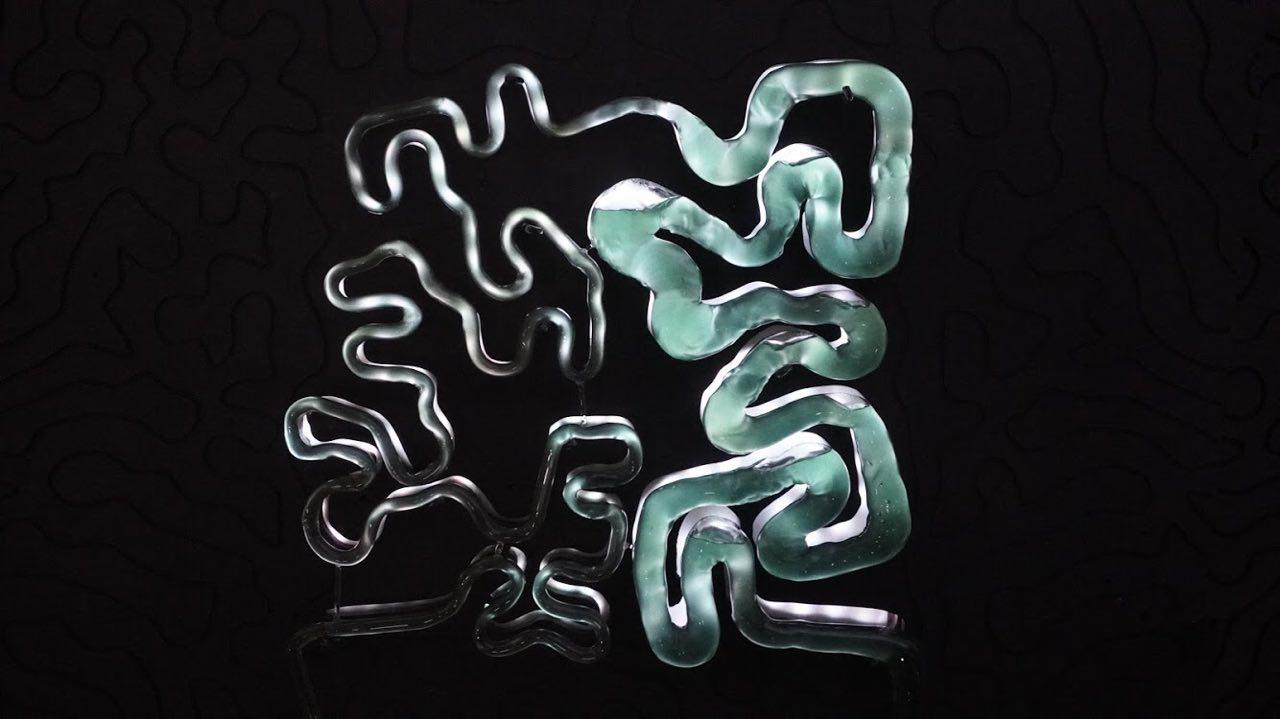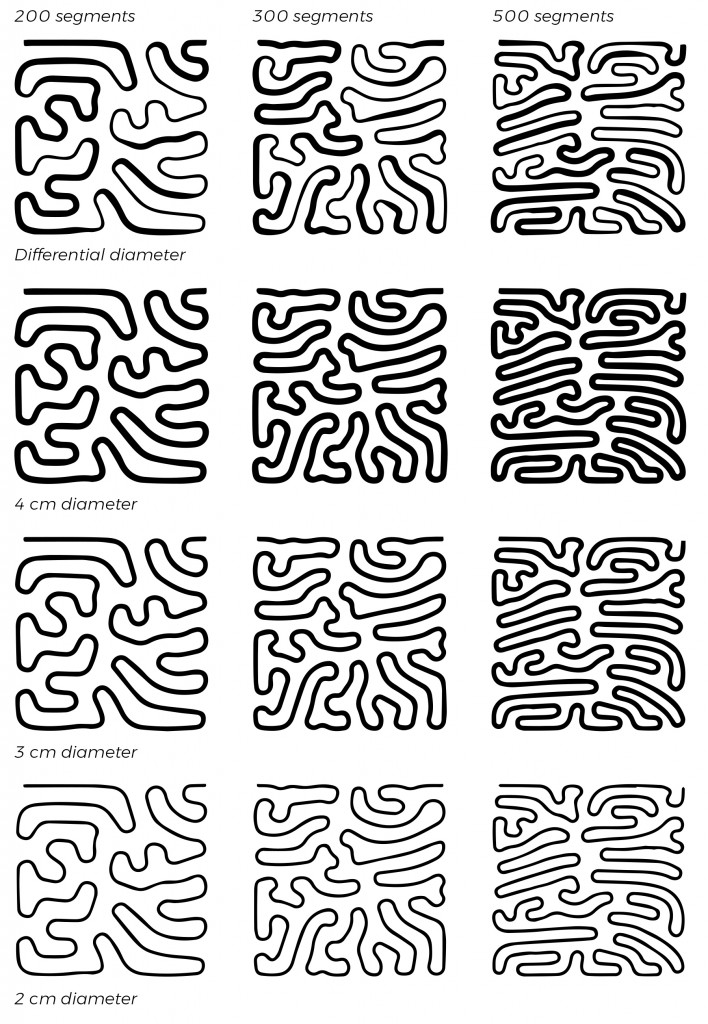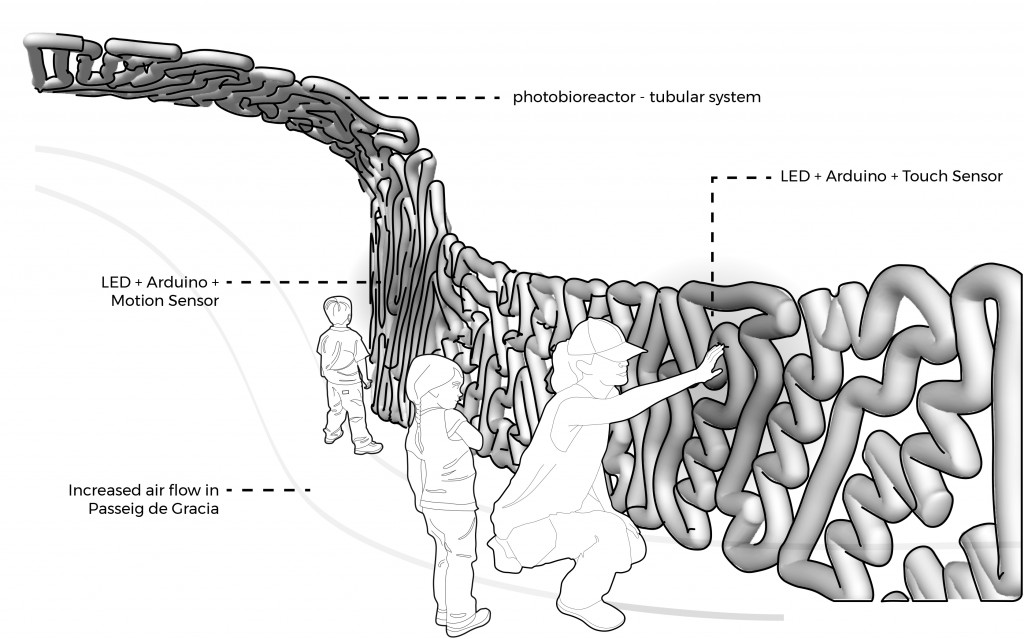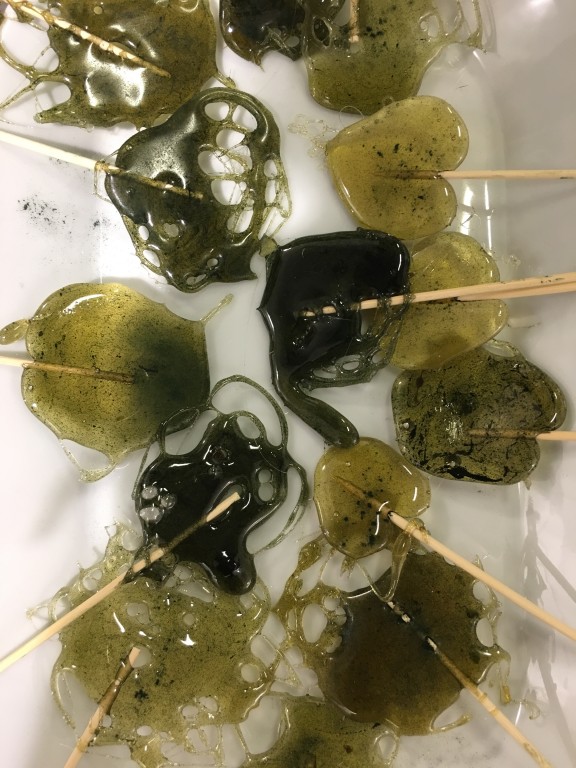The project ‘Urban Gastronomy’ aims to integrate the super food Spirulina in photobioreactors as a layer within the urban infrastructure in order to provide free and easily accessible nutrition to citizens within the city and improve the urban environment. Any undesirable area of the city can be intervened to improve its aesthetic, air quality and make it a production site for nutritious food. The site of this project is the Passeig de Gracia tunnel, which is a dire need for an intervention – since the air is still, and the experience of the 200 meter tunnel is overall unpleasant. A tubular photobioreactor system was chosen for the growth of Spiruliba as it gives the most surface area and maximize the spirulina growth. The tubular photobioreactos are designed to parasitic and attach themselves to the walls and ceiling of the tunnel. This pattern will be based on CFD modeling of the wind flow and movement of people through the tunnel.

Final Prototype
For the design of the tubular photobioreactor a biomimetic route was taken with the brain coral as inspiration. The shape of the brain coral lends itself readily to a tubular arrangement, with winding hills and valleys representing the tubes themselves. Brain Corals additionally exist symbiotically with algae the algae depends on the stony coral for structure while the coral depends on the algae for food – we were inspired by this specific relationship for our chosen morphology.
A brain coral pattern can be generated using a couple of different algorithms, particularly through the concepts of reaction-diffusion and differential growth. Reaction-diffusion is pixel or grid based simulation that forms all at once, instead of gradually from an initial position – which is not how an actual brain coral grows in nature. As a result, for this project a differential growth algorithm was used. Differential growth is a concept that can be simply described as growth that changes as it forms.
In order to get the desired effect of a brain coral, the parameters of the algorithm needed to be tuned. By changing the segment length, segment quantity, collision radius, and the shape of the initial input, we found the most ideal parameter values to achieve the most similar form to a brain coral.We created pipes out of the generated shapes, thereby translating the raw output of the algorithm into photobioreactor components. More parameter experiments were conducted, now with various pipe diameters.

Pattern Catalog
Walking through the tunnel it’s obvious that the air is stagnant, there is minimal ventilation, and the quality of the air is poor. One of spirulina’s many benefits is its capacity to purify air – with open air tanks, the spirulina will generate oxygen through photosynthesis – thus purifying the air in the tunnel.Mapping the tunnel based on the size of our photobioreator module – we are able to control ventilation through clever panel placement.

Tunnel Concept
The tunnel at the Passeig de Gracia metro stop will clearly not provide any natural light to grow our spirulina, so to counter this, we have designed an LED lighting system that both grows our spirulina and invites interaction with the photobioreactors themselves.
LEDs will be motion and/or touch sensored to encourage interaction and movement within the tunnel, thereby socially and spatially activating the tunnel. This interaction will also act as an introduction to spirulina for many, and will affect the way people view this microalgae – as something more approachable than its current role as a trendy health food for rich people.
The final attempt of the project was to give the harvested spirulina a rather gastronomic function and to make Spirulina accessible to the public and to encourage its consumption. For that matter, the last stage of the project was experiments with spirulina to reach edible candies and lollipops through the modification of the undesirable features of the algae.

Spirulina Candies
IAAC- MAA01 Introductory Studio G2
Team: Tal Dotan- Baran Mostafa Tehrani- Amin Ziae Bigdeli- Hira Zuberi- Sabrina Naumovski
Professors: Claudia Pasquero- Carmelo Zappulla